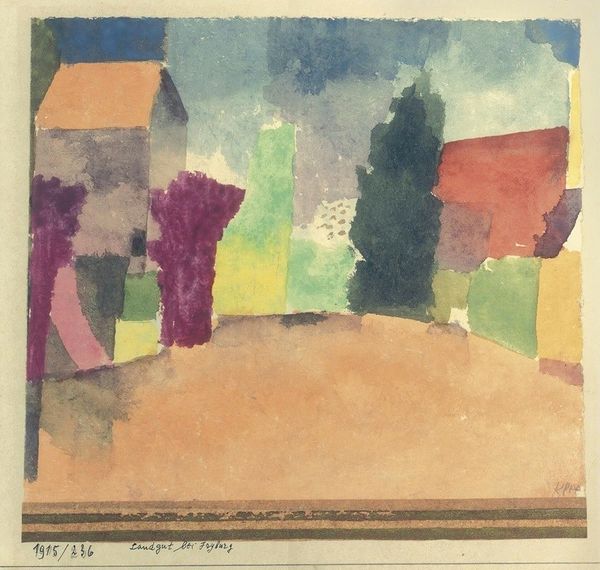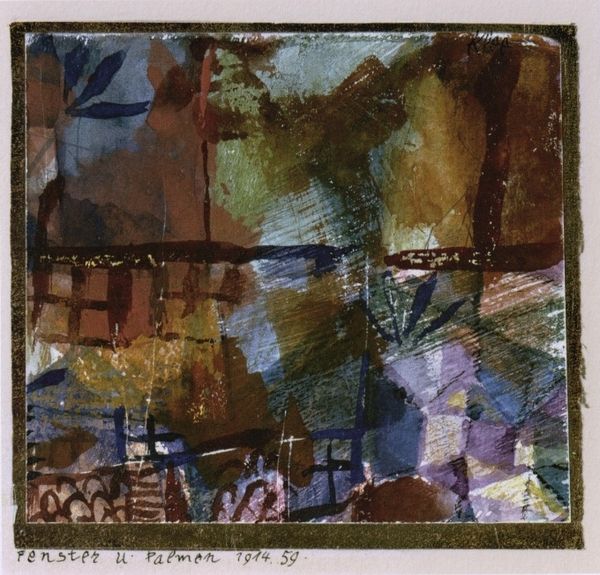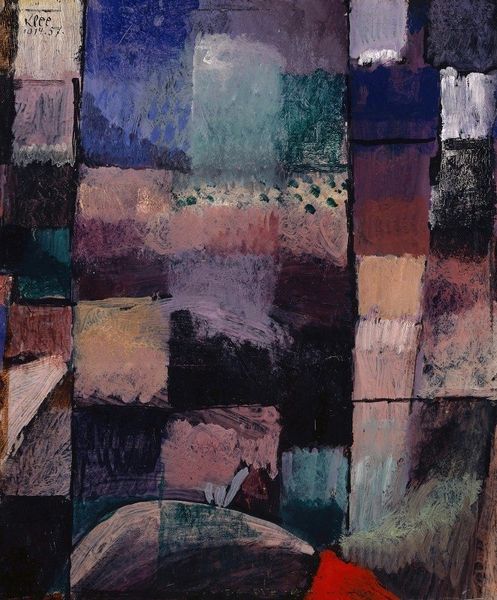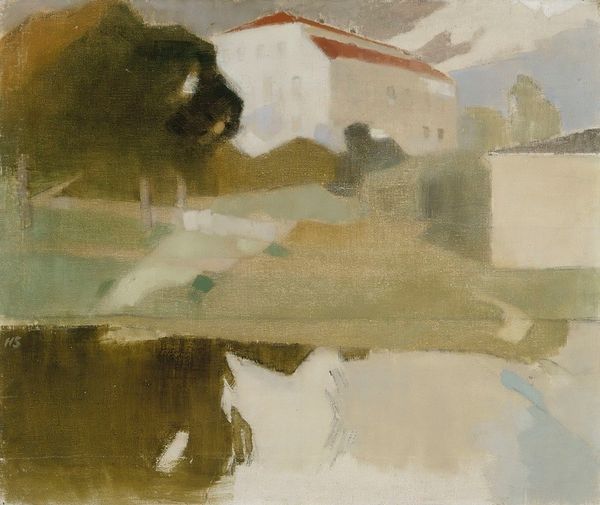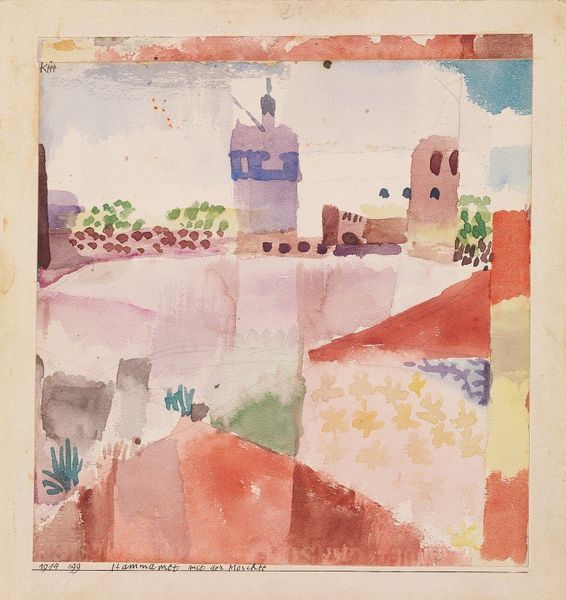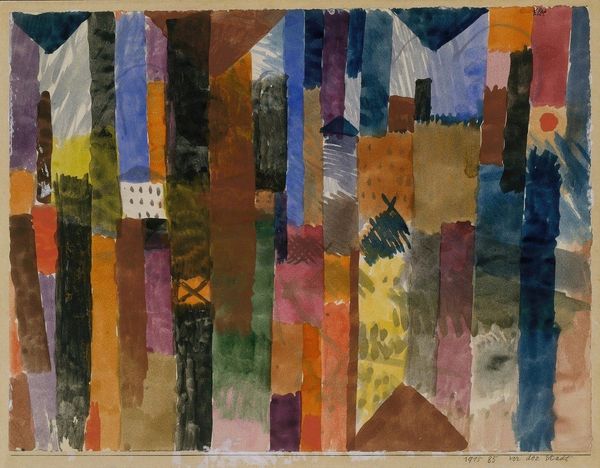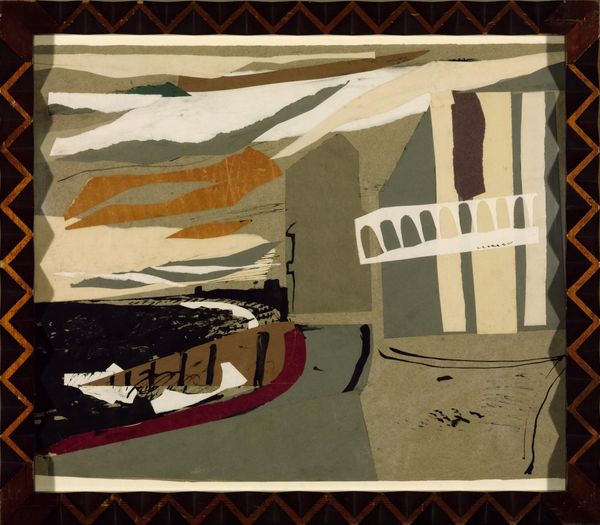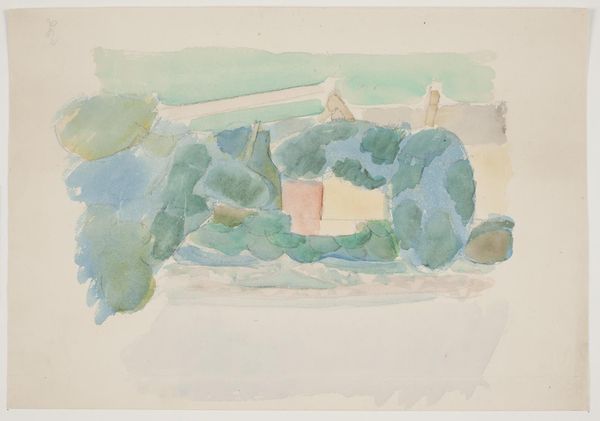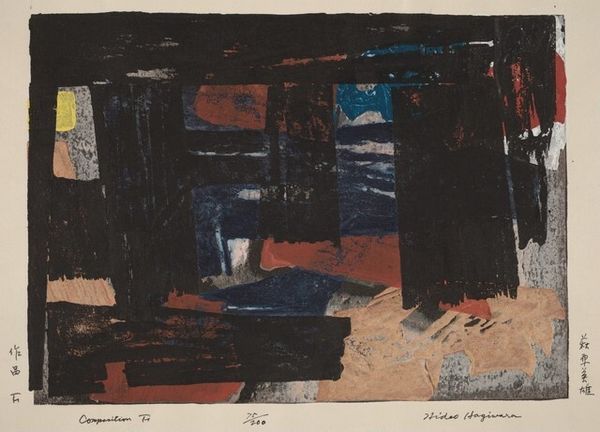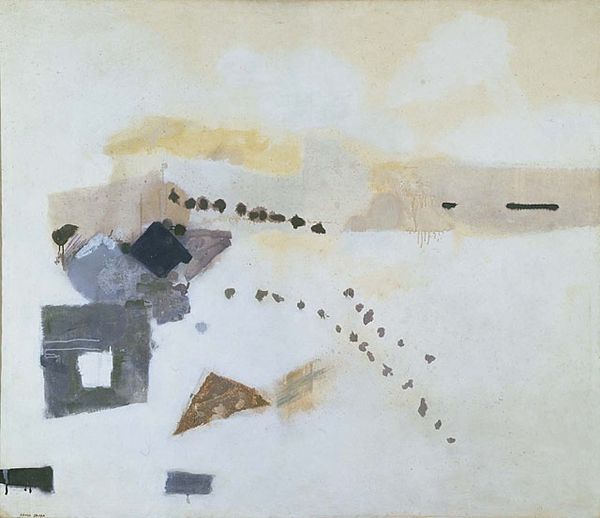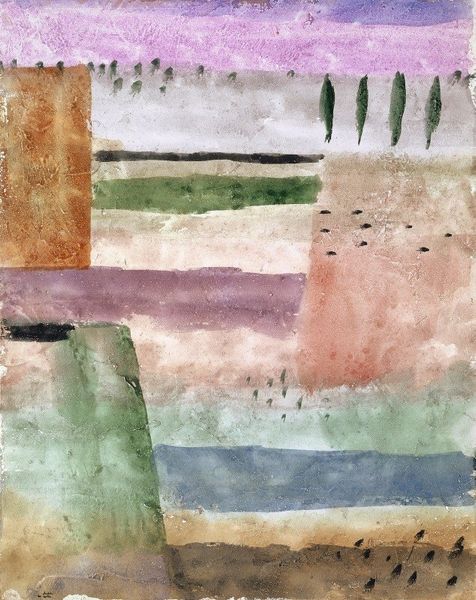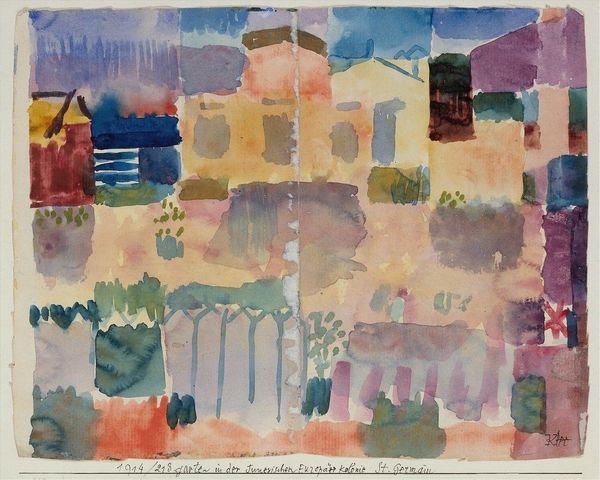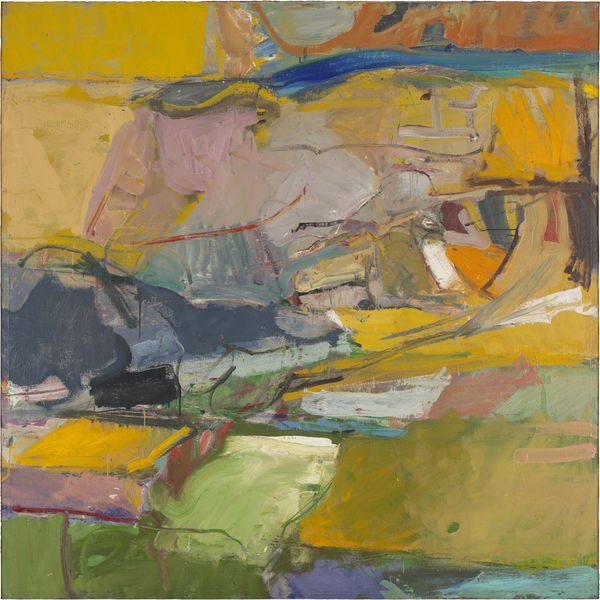
Dimensions: 15.5 x 15.9 cm
Copyright: Public domain
Editor: We're looking at Paul Klee's mixed-media work, "Captive," from 1940. It presents what looks like a stylized cityscape; the palette is quite muted and watery. The shapes almost remind me of building blocks. How do you interpret this piece? Curator: Its formal qualities speak volumes. Note the grid-like structure: it is deceptively simple. The composition utilizes a carefully considered arrangement of geometric shapes and color fields. There's an intriguing tension between the rigidity of the grid and the fluidity of the watercolor. Are you observing how Klee uses the translucency of watercolor to create depth? Editor: Yes, I see how the overlapping washes create subtle gradations and variations within each shape, adding a layer of complexity despite the simplified forms. Curator: Precisely. This suggests a negotiation between order and chaos, confinement and freedom, much like the title hints. Consider also the interplay between line and shape, particularly the thin dark outlines which seem to restrain the watercolor within each compartment. They define, but also limit. Editor: It's almost as though the city itself is trapped or restricted within the boundaries of the paper and the outlines. So, Klee uses the visual components to communicate deeper symbolic meaning. Curator: Indeed. The formal constraints reinforce the thematic concept suggested by the title. The structural elements are paramount to understanding its expressive power. Editor: I appreciate how breaking down the formal aspects has unveiled new depth within the artwork. Thank you. Curator: My pleasure. Exploring these structural relationships always allows us a better sense of meaning in art.
Comments
No comments
Be the first to comment and join the conversation on the ultimate creative platform.
